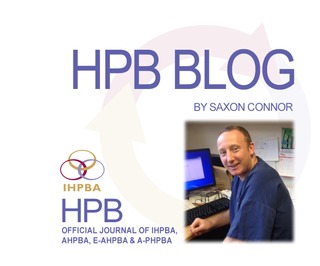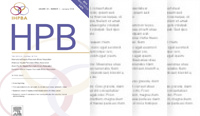International Hepato-Pancreato-Biliary Association
HPB Blog, July 2017

A winter or summer HPB feast depending on your hemisphere.
This month’s issue of HPB will require some dedicated time to be put aside due to the large number of articles that ask interesting questions that you will want answers to. Starting with the pancreas, had you ever wondered whether the occasional patient with PDAC stage 1a or 1b will actually benefit from adjuvant chemotherapy. It turns out they do. Ostapoff and colleagues analysed a large national dataset and showed the administration of adjuvant chemotherapy to be an independent factor in improving survival. Importantly chemo-radiation was shown to be associated with a worse outcome in some patients. How should we portray bad news to patients with pancreas cancer? Blakely et al interviewed surgeons and patients to find out. Three themes emerged - understanding, trust and hope. Patients desired simple truthful explanations that demonstrated caring and fostered optimism. Given the importance of these conversations to our patients, I would say this article is a must read. Is it worth performing a frozen section of the transection margin when performing a PD with the aim of ensuring an R0 margin. Not according to Barreto et al who performed a systematic review of the literature and concluded that more aggressive prognostic factors are the determinants of long term survival. There is a further paper by Partelli et al that confirms the value of day 1 drain amylase and post-operative Day 2-3 CRP in predicting CR-POPF. The key numbers to remember are amylase drain value >500U/Lon POD 1 and CRP> 150mg/L at POD2 and 185mg/L POD3.
There are two papers on liver transplantation in this month’s issue addressing topics of differential rates of portal vein thrombosis by ethnicity and the role of liver transplantation for hereditary hemorrhagic telangiectasia.
In terms of liver resection there is a systematic review that analyses the outcomes following PVE for colorectal liver metastases. This confirms the effectiveness of this approach with 70% of patients proceeding to surgery and a 10% rate of PLF. The survival for those who undergo resection seems similar to those who do not require PVE. Finally, an interesting paper from Azoulay and colleagues describes what happens when you start to increase your indications for surgery. Over a 30 year period an increase in perioperative morbidity and mortality was observed. This was due to the willingness of the surgeons to expand the indications for hepatic surgery. The authors elegantly explain why this is the right approach to take and that these apparent worse outcomes can be celebrated.
Saxon Connor
Corporate Partners
If you are interested in becoming a Corporate Partner of the IHBPA please contact industry@ihpba.org
Find out more


